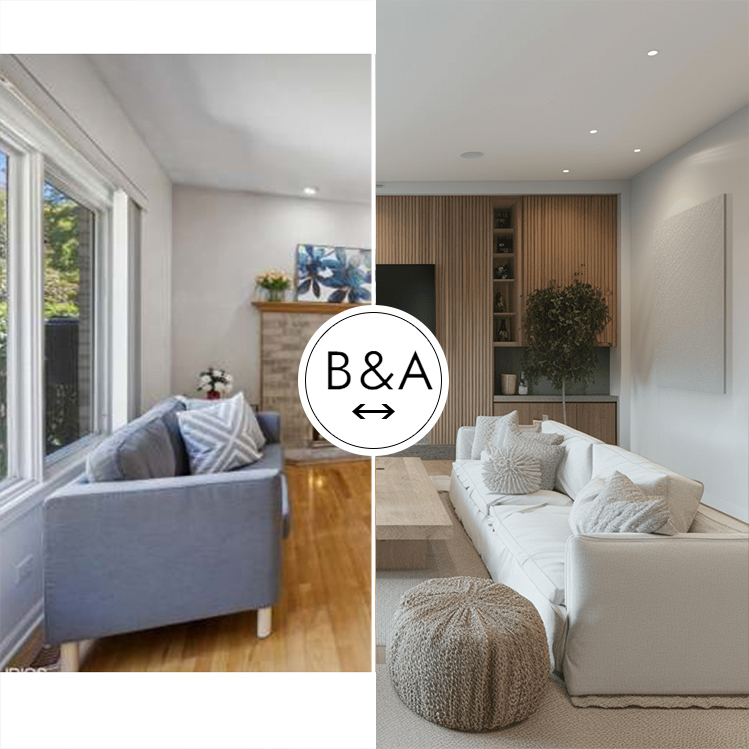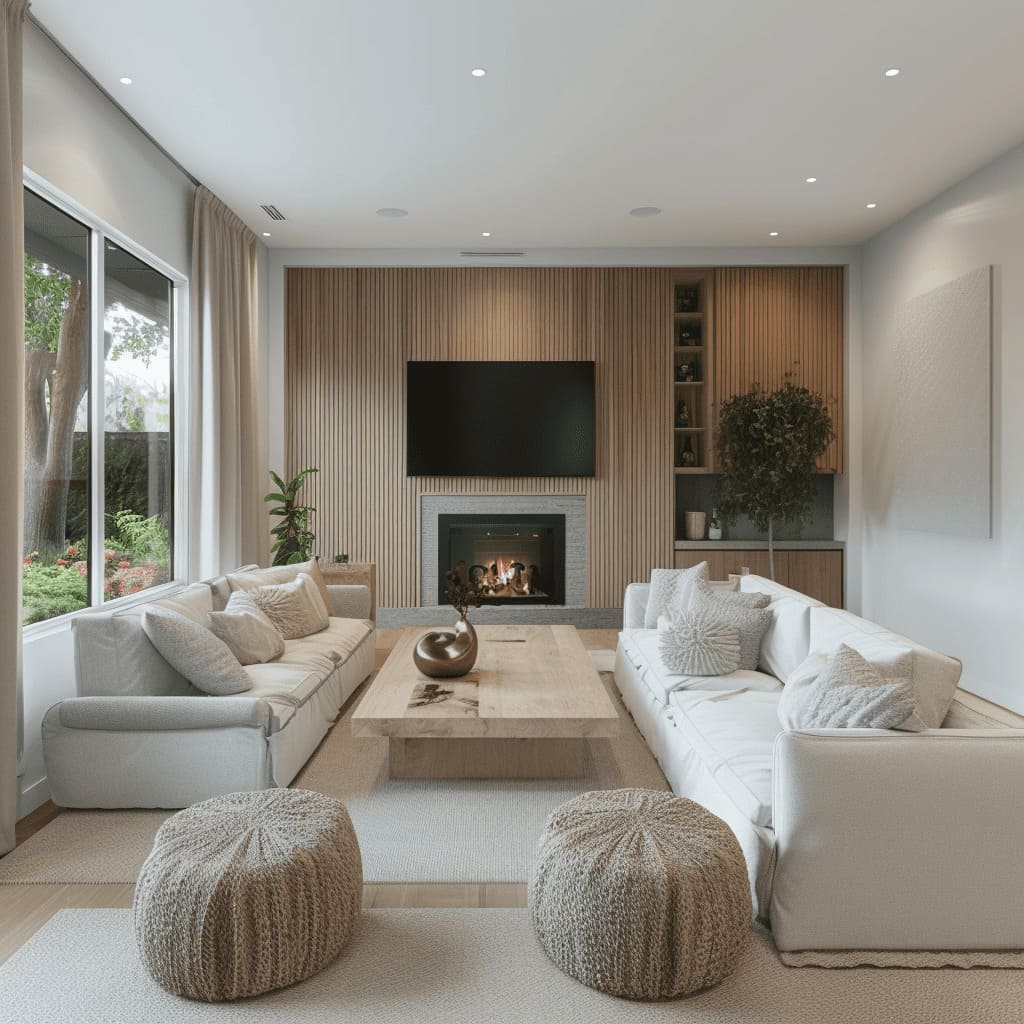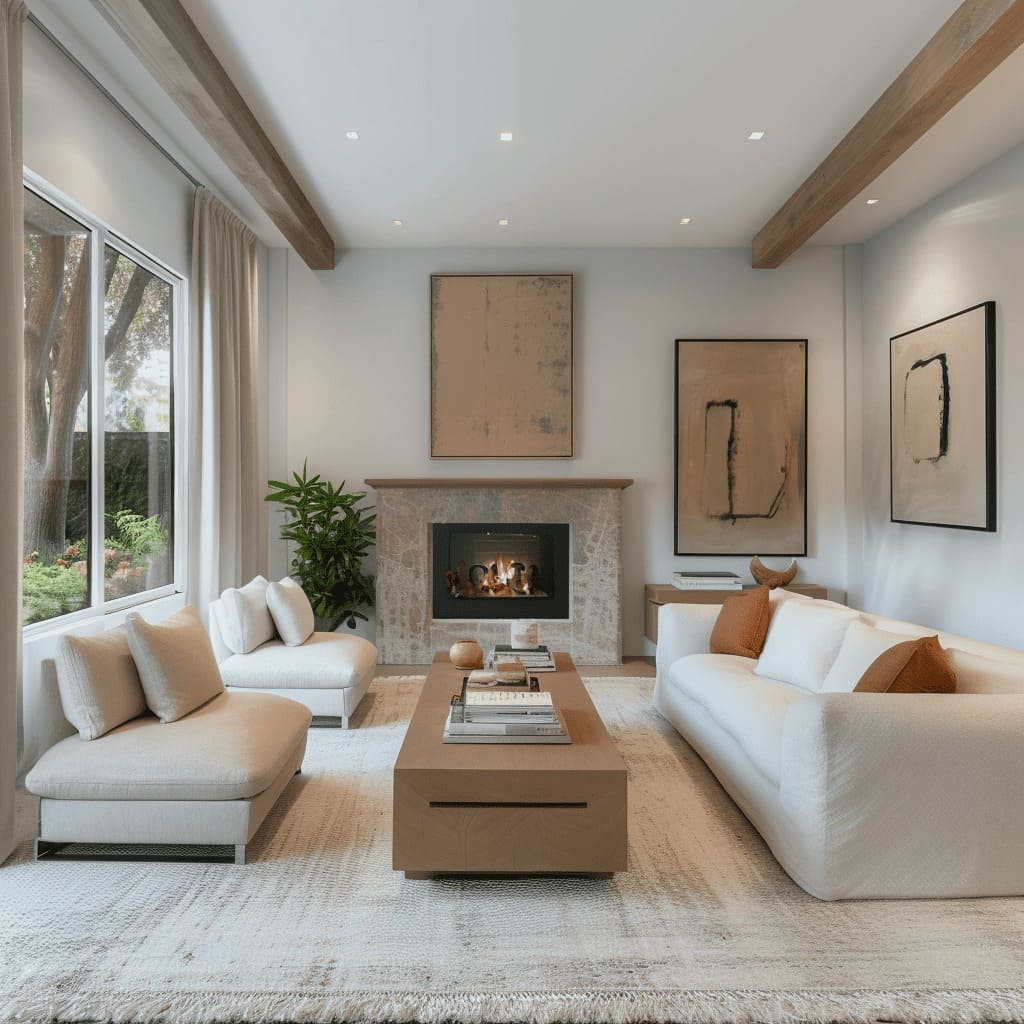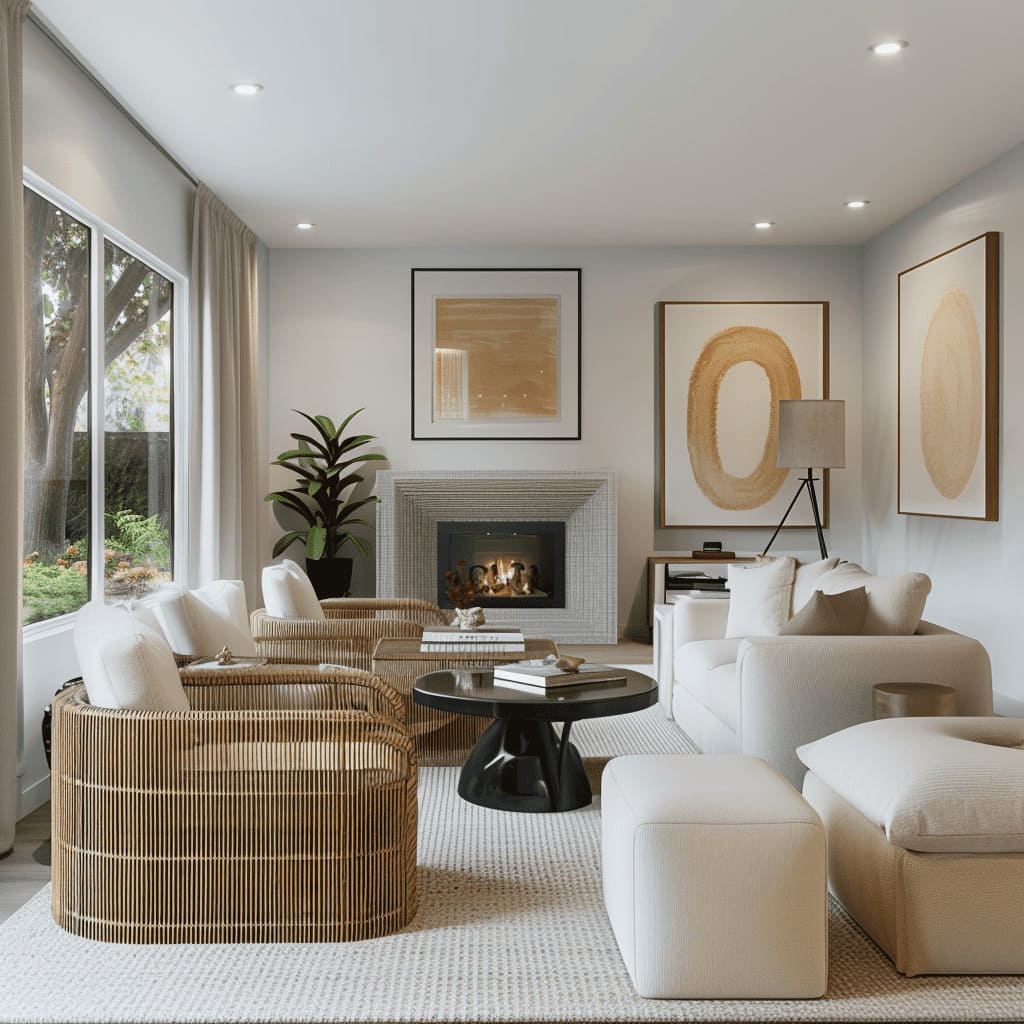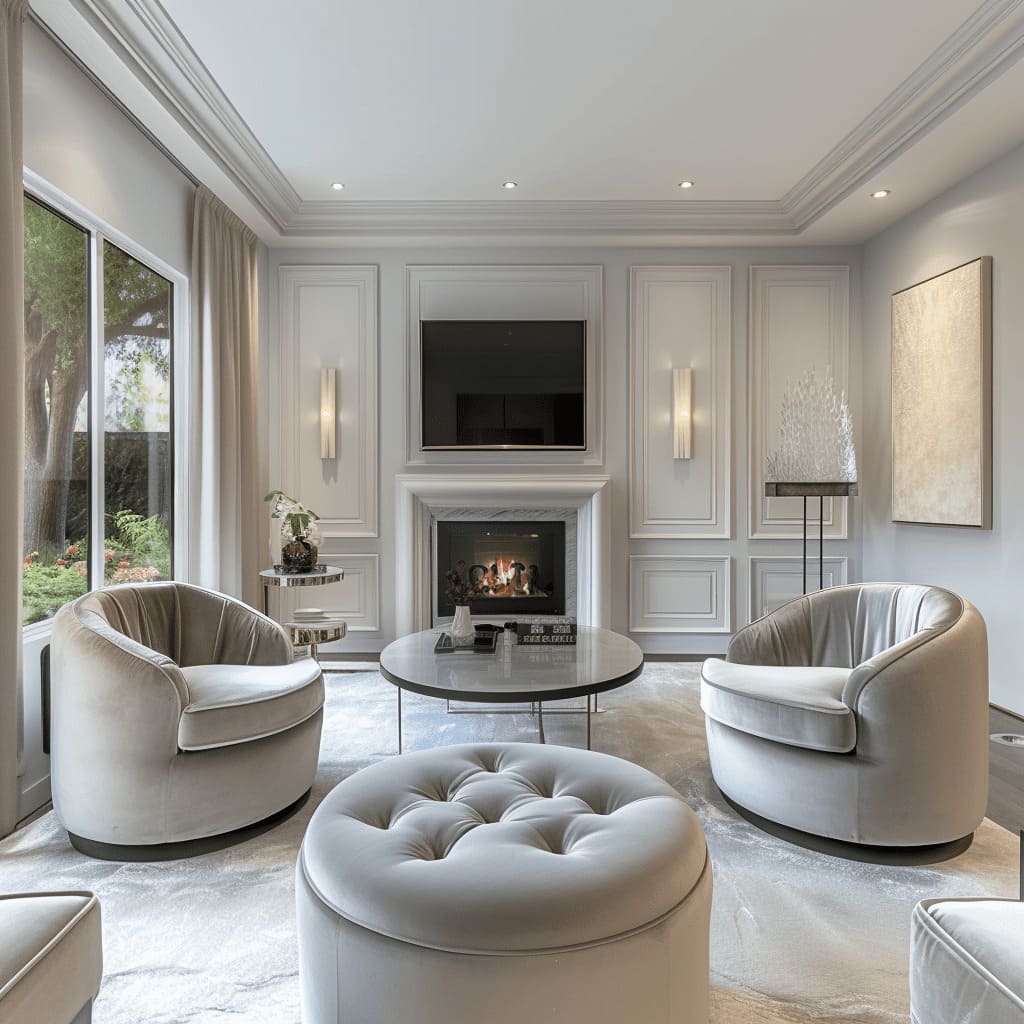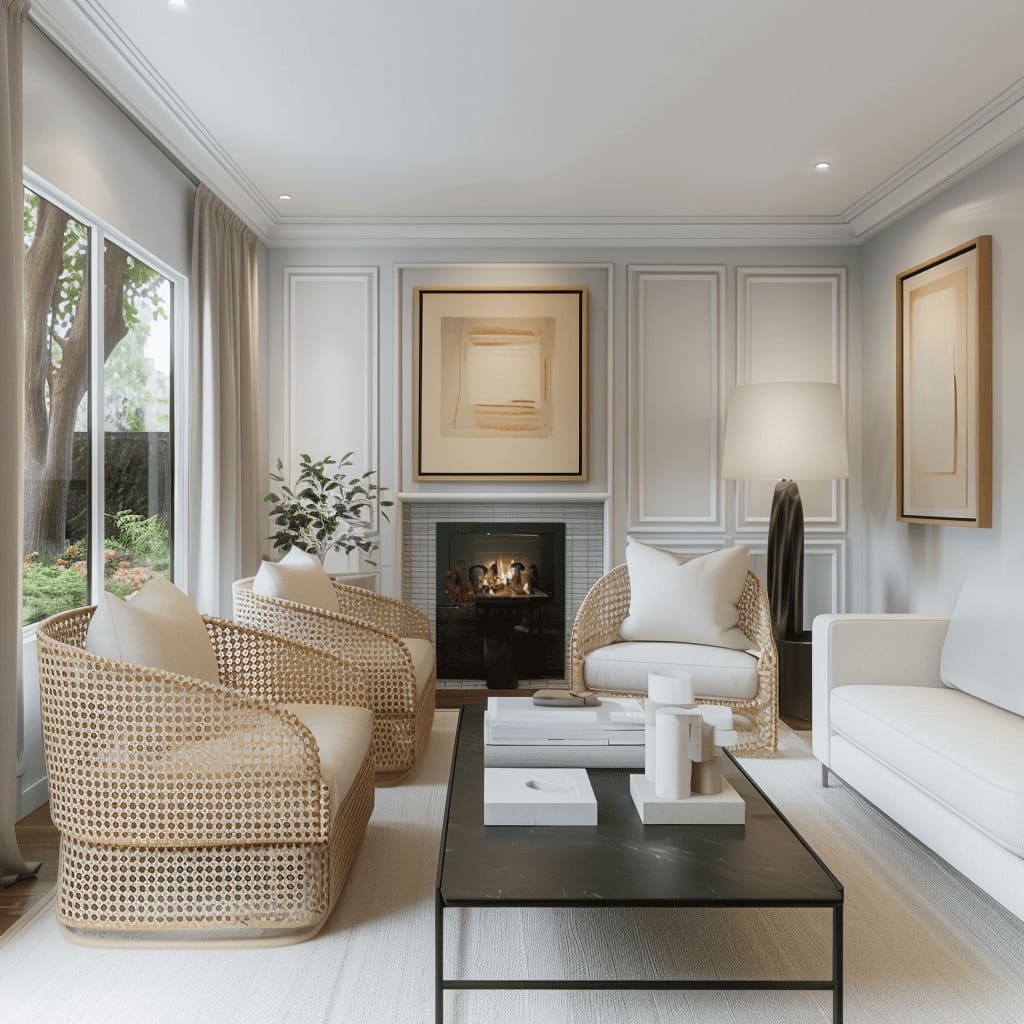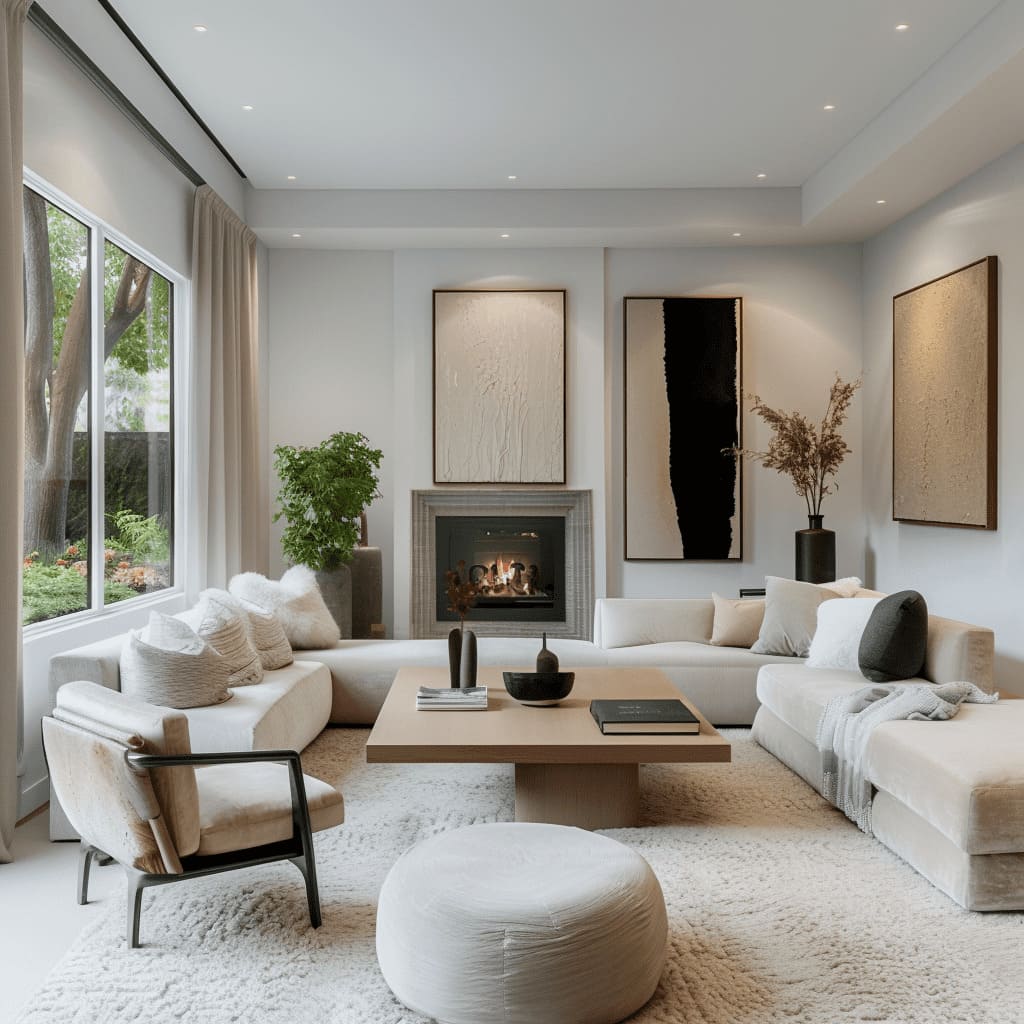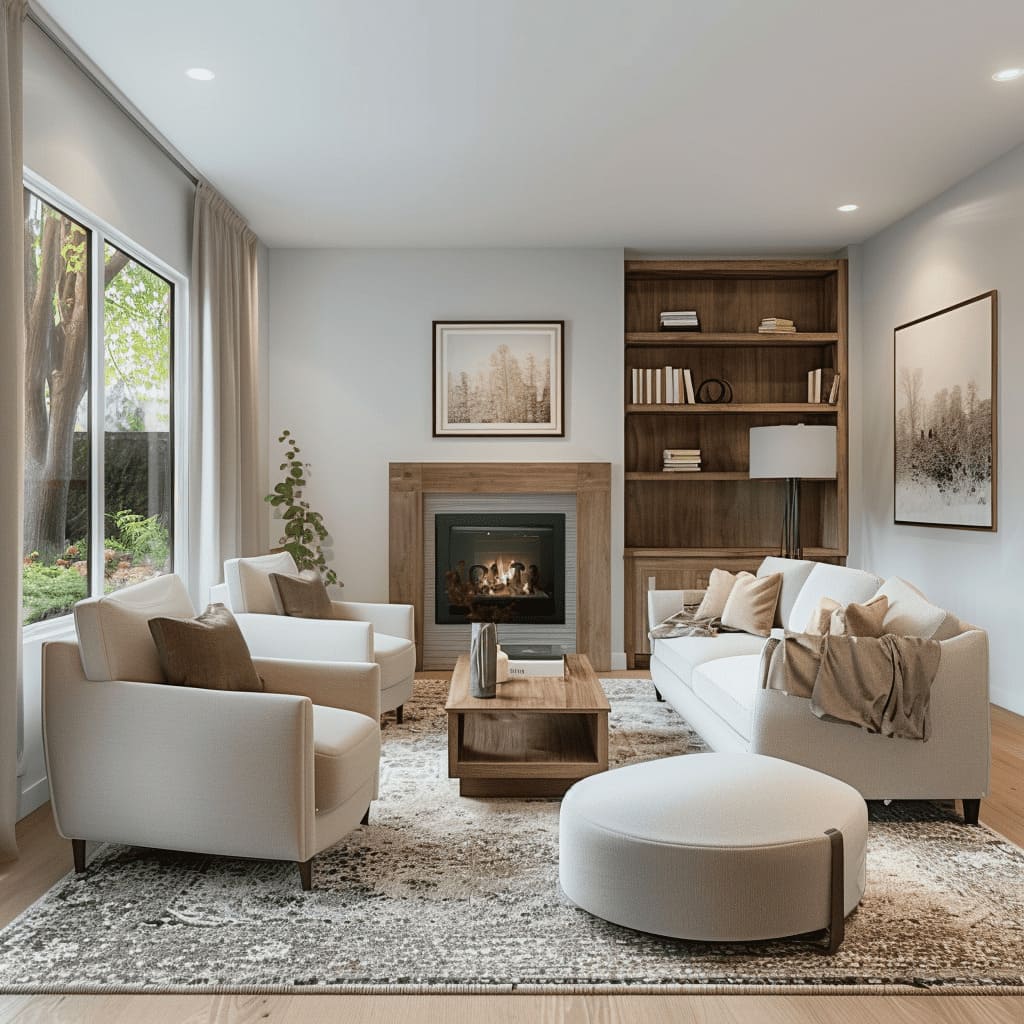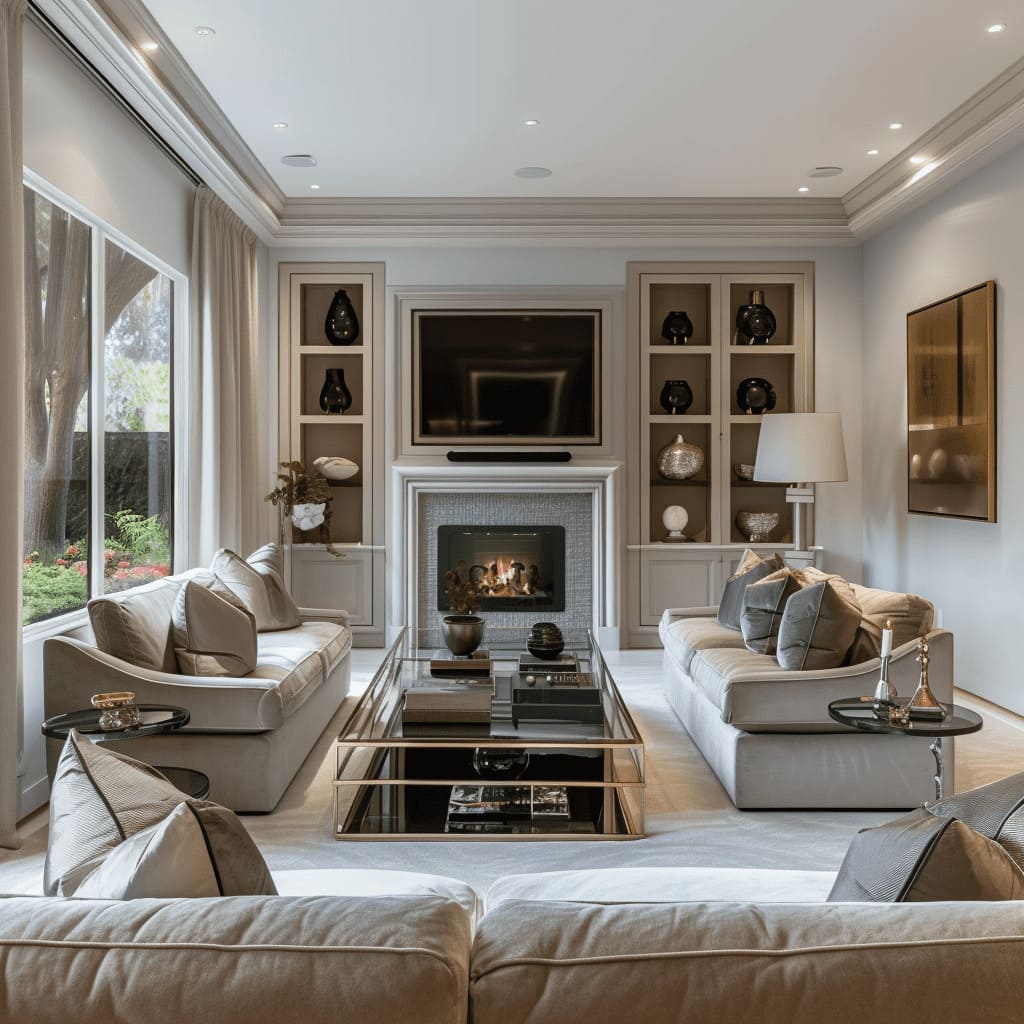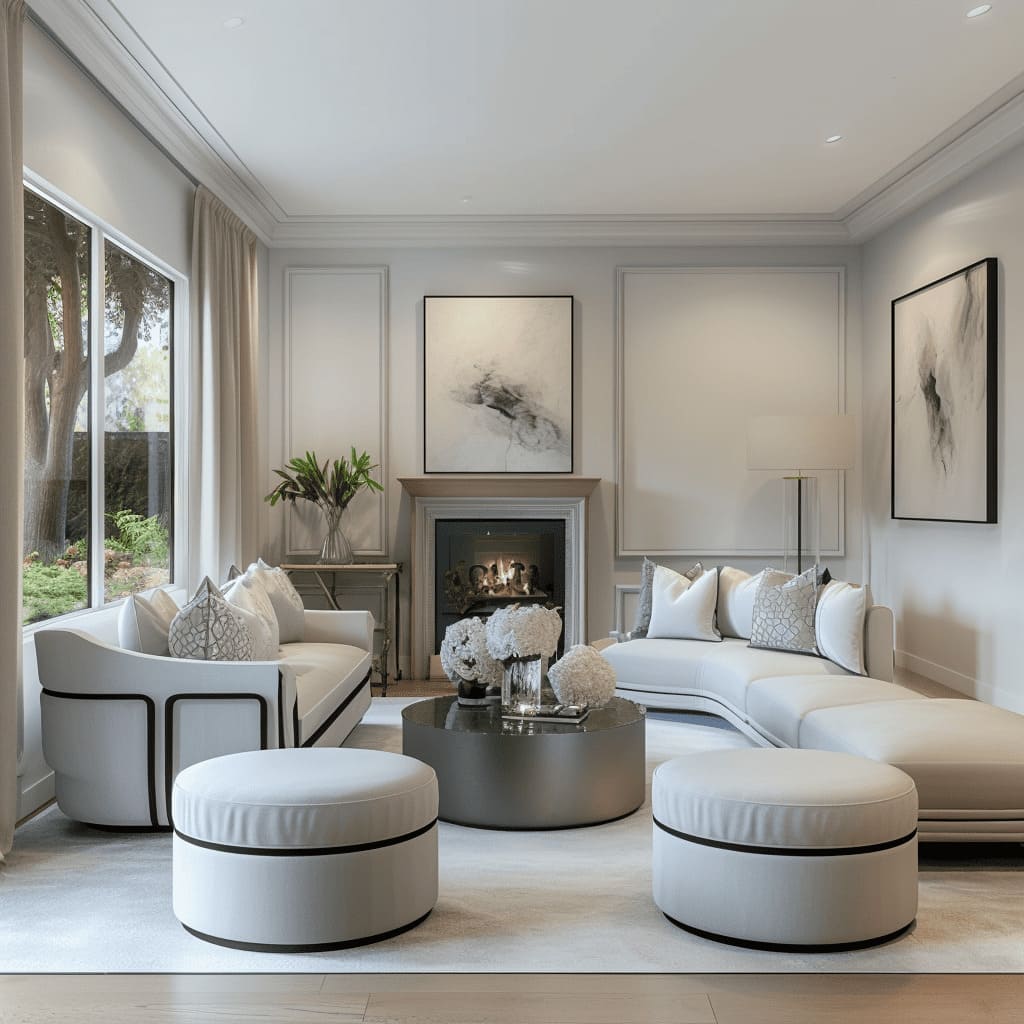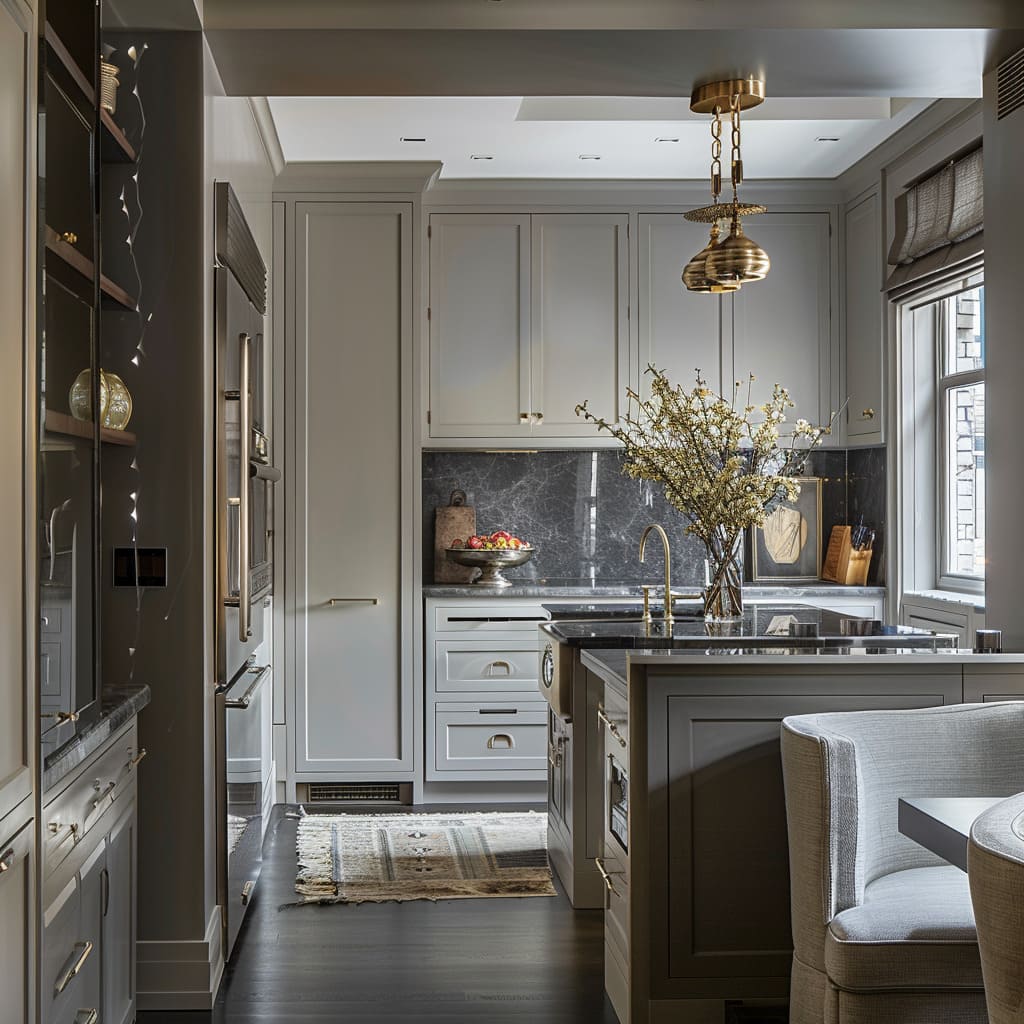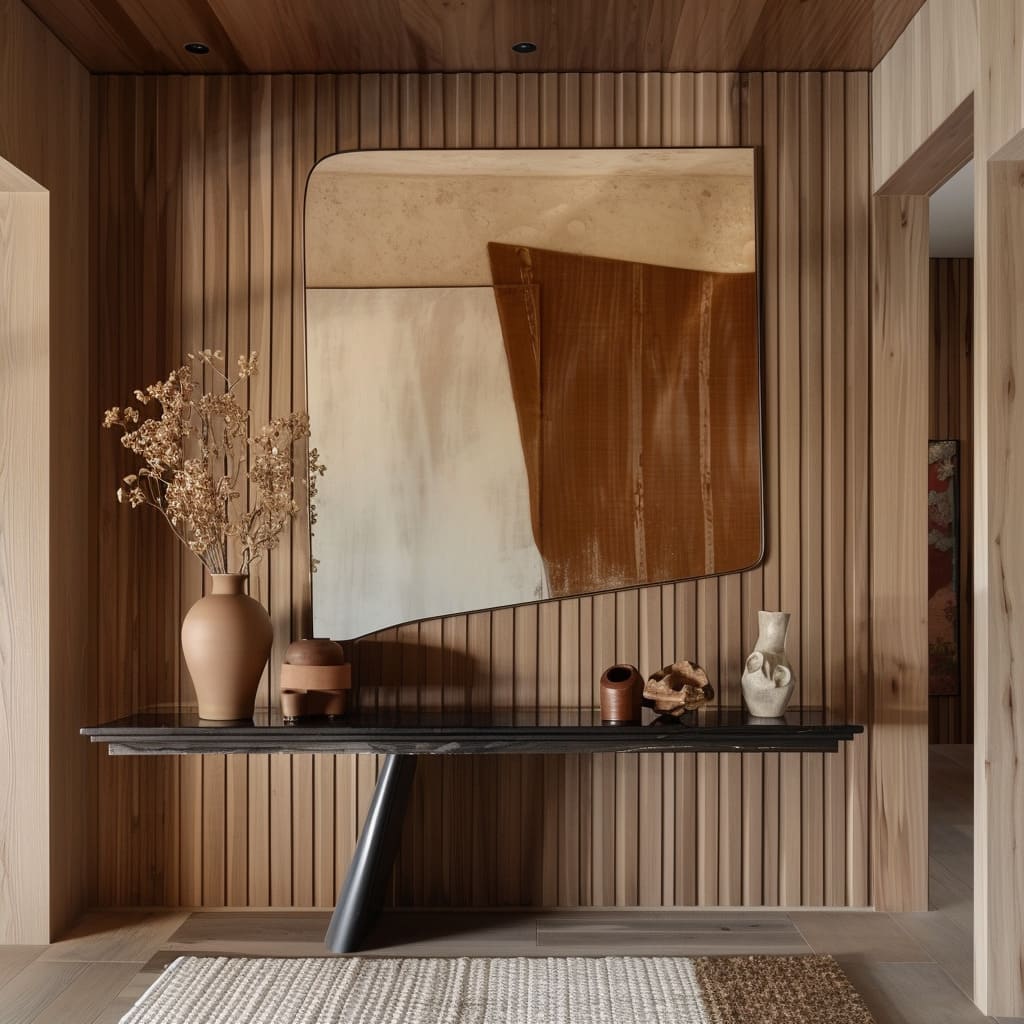The transformation of the original living room into various new design concepts demonstrates a comprehensive approach to modernizing and enhancing the space’s aesthetic and functional qualities. Here’s a detailed description of how the room has been transformed:
Original Room:
The original room featured a neutral color palette with light walls, large windows for natural light, and a traditional brick fireplace with a wooden mantel. Furniture included a light grey sofa, bold red armchairs, and a dark wood coffee table with a glass top.
The decor was simple, with a few pieces of artwork and some plants, providing a cozy but somewhat dated ambiance.
Redesigned Concepts:
General Transformations:
Color Palette and Lighting:
- In the redesigned concepts, the color palette has been modernized, focusing on neutral tones with accents of darker shades or vibrant colors to create contrast and interest.
- Lighting has been enhanced with strategically placed recessed lights, floor lamps, and table lamps to create a warm and inviting atmosphere.
Furniture Arrangement:
- The furniture layout has been reimagined to optimize space and enhance comfort. Sofas and chairs are arranged to promote conversation and functionality.
- Modern, plush seating options replace the older furniture, offering both style and comfort.
Decor and Accessories:
- Decor elements such as large, abstract art pieces, sophisticated rugs, and elegant accessories have been introduced to add personality and sophistication to the room.
- The use of plants and natural elements brings a touch of freshness and life to the space.
Fireplace and Focal Points:
- The fireplace has been redesigned in some concepts, with new surrounds made of modern materials like stone or metal, transforming it into a striking focal point.
- Above the fireplace, contemporary artwork or mirrors enhance the visual appeal.
Specific Design Concepts:
Luxurious Transitional Style:
- One design concept features a luxurious transitional style with a combination of traditional and contemporary elements. The room is adorned with plush, light-colored furniture accented with dark piping.
The walls are decorated with large, abstract art pieces in monochrome shades, and a round coffee table sits at the center, holding elegant floral arrangements.
Modern Farmhouse:
- Another concept embraces a modern farmhouse style, with a wooden panel accent wall behind the fireplace. Comfortable, oversized sofas and armchairs in light beige tones are arranged around a large, rustic wooden coffee table.
Textured poufs and knit throws add warmth and coziness to the space.
Japandi Style:
- The Japandi style concept blends Japanese minimalism with Scandinavian functionality. The room features low-profile furniture with clean lines, neutral tones, and natural materials like wood and stone.
Simple, elegant decor and greenery emphasize calm and tranquility.
Rattan and Wicker Accents:
- In one of the concepts, rattan and wicker elements are prominently featured. Light-colored wicker chairs paired with soft, white cushions create a relaxed, coastal feel.
The room is accessorized with a dark wood coffee table, and large framed prints in natural hues adorn the walls.
Natural and Earthy Tones:
- Another concept focuses on natural and earthy tones, with beige sofas, wooden coffee tables, and neutral-colored rugs. Textured throw pillows and blankets add depth and comfort.
The fireplace is flanked by built-in wooden shelves filled with books and decorative items.
Sophisticated Contemporary:
- The sophisticated contemporary design incorporates sleek, modern furniture with a focus on clean lines and a neutral palette. Black and white abstract art pieces and minimalistic decor items create a chic, polished look.
The fireplace is framed with a simple, modern surround, enhancing its elegance.
Conclusion:
The redesign of the original living room into these various concepts showcases a blend of modern aesthetics and functionality. Each design option has been thoughtfully crafted to enhance the room’s ambiance, making it more inviting and visually appealing.
The transformations highlight how different styles and elements can be used to create a space that reflects personal taste while maximizing comfort and practicality.
